Pasture Champion: Jon Thornes, South Ormsby Estate, Lincolnshire 2/5
Tell us about your pasture and paddocks
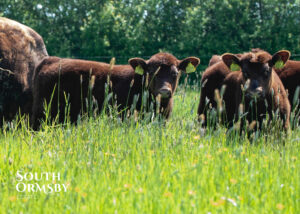 Lincoln Reds enjoying the long grass of June
Lincoln Reds enjoying the long grass of June
We are proud to be accredited by the Pasture for Life Association and we wholeheartedly share their commitment to farming in sympathy with nature.
We’ve adopted a rotational paddock system, meaning that each of our one-hectare grass paddocks gets at least six months to re-grow after a visit from the Lincoln Reds.
For the 2021-22 winter season, we decided to experiment with grazing our Lincoln Red herd on standing hay rather than feeding them cut hay. In previous years, we cut hay in summer, dried it, baled it, wrapped it, transported it, stored it then fed it to the Reds when the cold started to bite. Last year, in preparation for winter, we only baled half the normal amount of hay and left 25 hectares of grass and other herbage un-grazed.
In early December 2021, the Reds were twice daily given access to a strip of un-grazed pasture between 1/4 and 1/8 of a hectare in area.
In a matter of hours, the grass in these strips goes from long and thick to non-existent and lots of manure is left behind. The damp ground is thoroughly massaged by the cattle’s hooves, breaking up the thatch, allowing air and water into the topsoil and mixing the top 6cm.
Each strip will be grazed three more times by the Reds in 2022 before being closed off in October and left alone for a year.
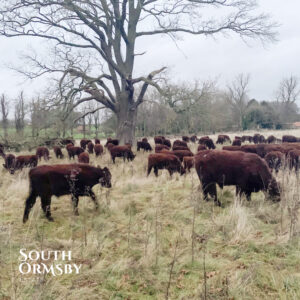 Grazing before January
Grazing before January
Within a month or two of a brief visit from the Reds, a rich carpet of green grass will appear.
Having the Reds out on the land throughout the winter helps boost biodiversity all-year round.
Fresh dung brings beetles, and beetles bring and sustain birds. The cattle are a link in our food-chain, benefitting all manner of creatures from microfauna in the soil to red kites and buzzards riding the thermals overhead. Throughout last spring and summer, this thick sward did wonders for our biodiversity, attracting bugs, butterflies, moths, small mammals, birds and bats in abundance.
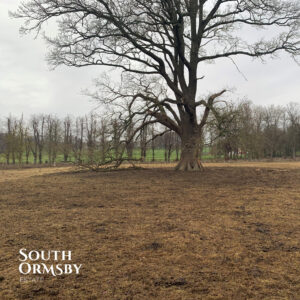 After the winter grazing
After the winter grazing
The soil is much improved by this cycle. The standing hay grows deeper roots in its fallow year, improving water retention and preventing water run-off. The roots also build up sugars in the soil, nourishing the bacteria and fungi that will fuel future plant growth and help us avoid petrochemical fertilisers.
As a rare and native breed adapted over many generations to our landscape and climate, the Lincoln Red thrives outdoors in all weathers.
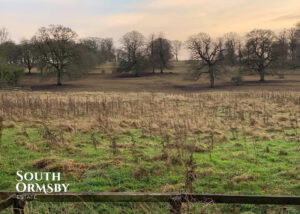 Winter grazing about to start
Winter grazing about to start
In winter, their coats grow thick and they remain more healthy outdoors than indoors with far fewer colds and sniffles. We’re planning to upgrade our fencing and gateways and ensure frost-free water supplies to allow our herd to make the most of winter outdoors in future.
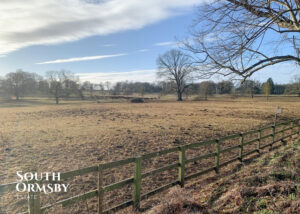 After January's grazing
After January's grazing
South Ormsby Estate’s Lincoln Red herd is helping us both improve biodiversity and mitigate climate-change. By minimising or eliminating the use of diesel-powered vehicles, bale wrap, fertiliser, non-grass feed and other synthetic products, we’re whittling down our carbon footprint. Methane emitted by our cattle is on a par with that generated by vegetation left to rot. In our pastures, methane from grazing cattle is a useful fertiliser for our grass, which grows back more abundantly than it would if cut mechanically.
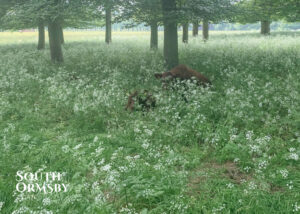 Cattle thriving in June's long grass
Cattle thriving in June's long grass



